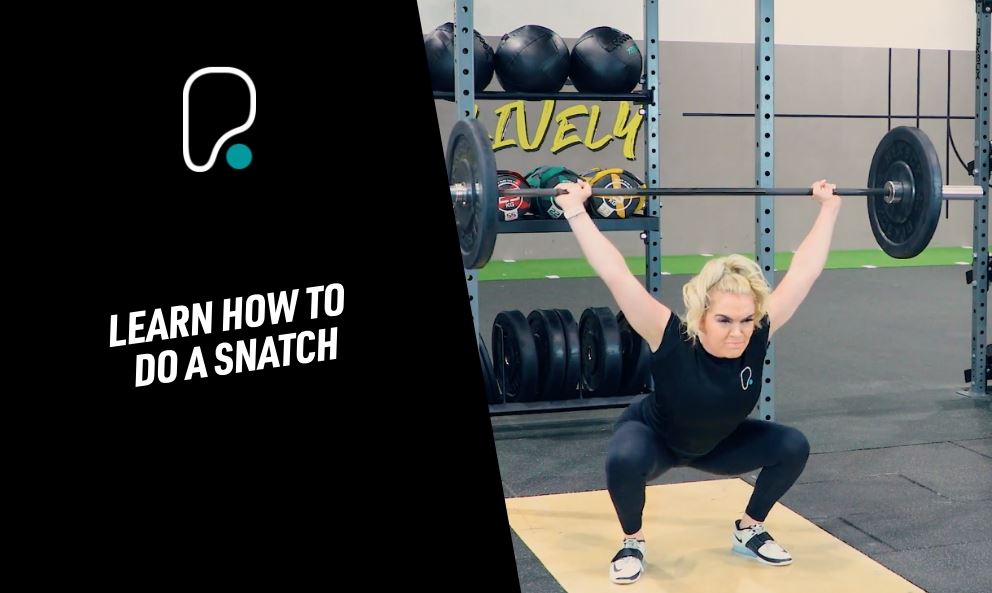Learn How To Do A Snatch

Olympic weightlifting is an advanced form of lifting which focuses on functional, compound exercises – predominantly the Clean & Jerk, and the Snatch. Here, we’ll be focusing on the Snatch, and you can check out how to do the Clean and Jerk here.
If you want to start Olympic Weightlifting but are not sure how or where begin, we’ve got you covered. We’ve teamed up with Andrew Tully, Olympic Weightlifting Coach and Personal Trainer, to help you master the technique in the Snatch and the Clean and Jerk lift in our ‘How To Start Olympic Weightlifting’ series.
Learn how to Snatch
In this blog, we’ll be:
-
Breaking down the Snatch so you can learn how to get started and practice the movement
-
Sharing 3 accessory lifts that will help you to practice the technique and build the strength and power needed to do the Snatch
Andrew will also be breaking down and demonstrating the lifts on the video below to highlight the key movement phases, as well as give you heaps of practical tips and guidance on mastering the form and technique for both lifts.
If this is your first time trying Olympic Weightlifting, we recommend starting with a lighter barbell or even a broom handle to nail down your form and technique first before adding weight. It’s always important to prioritise safety, especially with more complex compound lifts.
How to do the Snatch lift:
We’ve broken down the Snatch step by step to help you get started.
-
First, you want to get into your starting position. Approach the bar as if you are doing a deadlift. Grab the bar in a wide grip position and try to keep your shoulders parallel (in line) or just over the bar.
-
Keep your back flat at a 90-degree angle and sit into the squat as low as you can.
-
Next, deadlift the bar up to your knee and transition through the second pull which is from the knee to below the hip.
-
Transition into the third explosive pull. Drive the bar up with your legs and the hips forward and drop under the bar into the receiving position. The receiving position is at the bottom of the squat with your arms fully locked out and the bar above the head.
-
Keep your arms locked out in the finishing position. Brace your core and then stand with the bar lifted above your head.
Accessory Lifts
Now, let’s talk about some accessory movements – exercises which will help you work up to the full Snatch by building strength and power in the key parts of the lift. Even if you can do a snatch in full, these exercises will help to improve your snatch lift.
Remember to always try these movements with a load that you can safely lift as the priority is learning the movement pattern over the weight on the bar.
-
Overhead Squat
The overhead squat builds strength in your shoulders and core and helps to build balance and stability needed for the snatch. It also replicates the transition between the receiving position and finishing position of the lift.
Here are some handy teaching points to help nail your overhead squat:
- Keep your arms fully locked out throughout the squat and keep them locked out for each rep.
- Work on your shoulder mobility with a light pump bar or broomstick by holding the bar out in front and trying to bring it overhead and behind your back without letting the arms bend. This will improve your range of motion and make the overhead squat much more comfortable.
-
Snatch Balance
The Snatch balance helps you to improve speed and balance for the third pull of the lift and catching the bar in the receiving position. With the bar on the back of the shoulders, the lifter drops into a squat position, at the same time they will catch the bar above the head, locking the arms out.
Here are some handy teaching points to help nail your snatch balance:
- Avoid dipping your legs and throwing the bar up. The idea of the lift is to not ‘press’ the bar but to ‘catch’ the bar on your way into the squat position.
- Try to work on the speed of the drop in the snatch balance. As the speed of the lift increases, your balance in the receiving position will improve when doing the full lift.
-
Power Snatch
The power snatch helps you to concentrate on the pulls of the lift and work on their power. Avoiding adding in the drop and having the receiving position at the bottom of a squat position, it means your new receiving position is at the top of the lift in a standing position meaning you will have to add more power to the bar to get into this position.
Here are some handy teaching points to help nail your power snatch:
- Concentrate on powering the bar upwards and keeping the elbows above the bar on the third pull for as long as possible before catching the bar at the top.
- Keep the bar as close to the body as possible to avoid becoming off balance and losing the momentum of the lift.
Nailing the Snatch is a great way to start Olympic Weightlifting, and an excellent stepping-stone to the other main lift - the Clean and Jerk, which you can get Andrew's coaching tips for here.
You can also check out our YouTube channel for more form tips and workout ideas, or get free workouts here.


